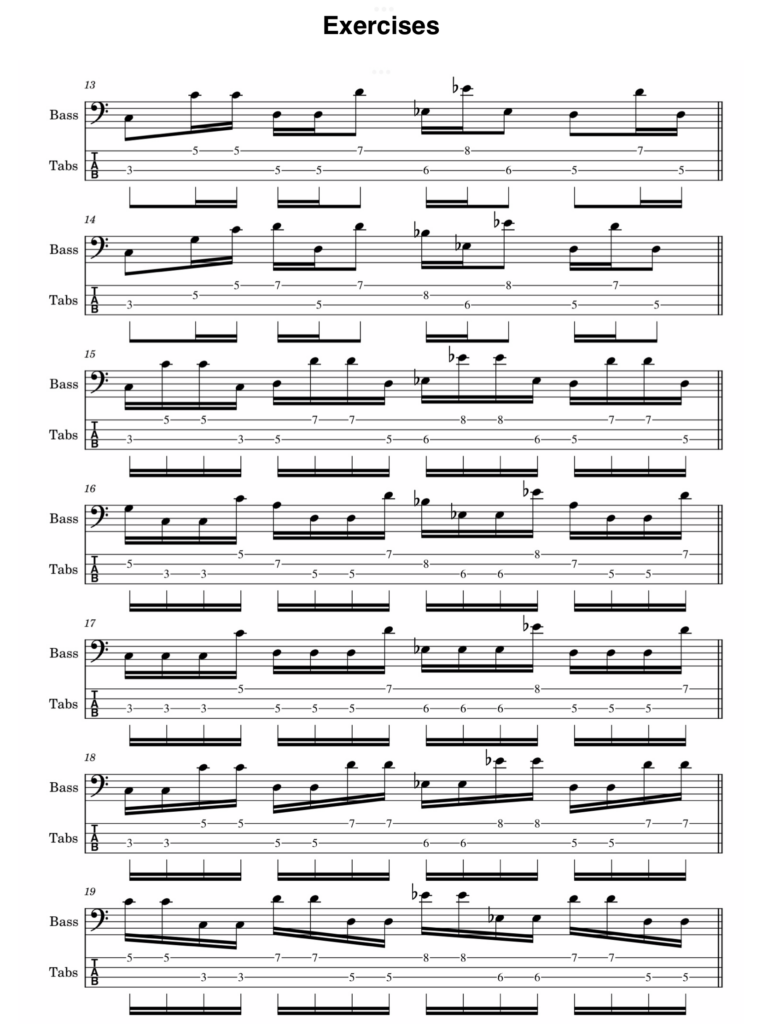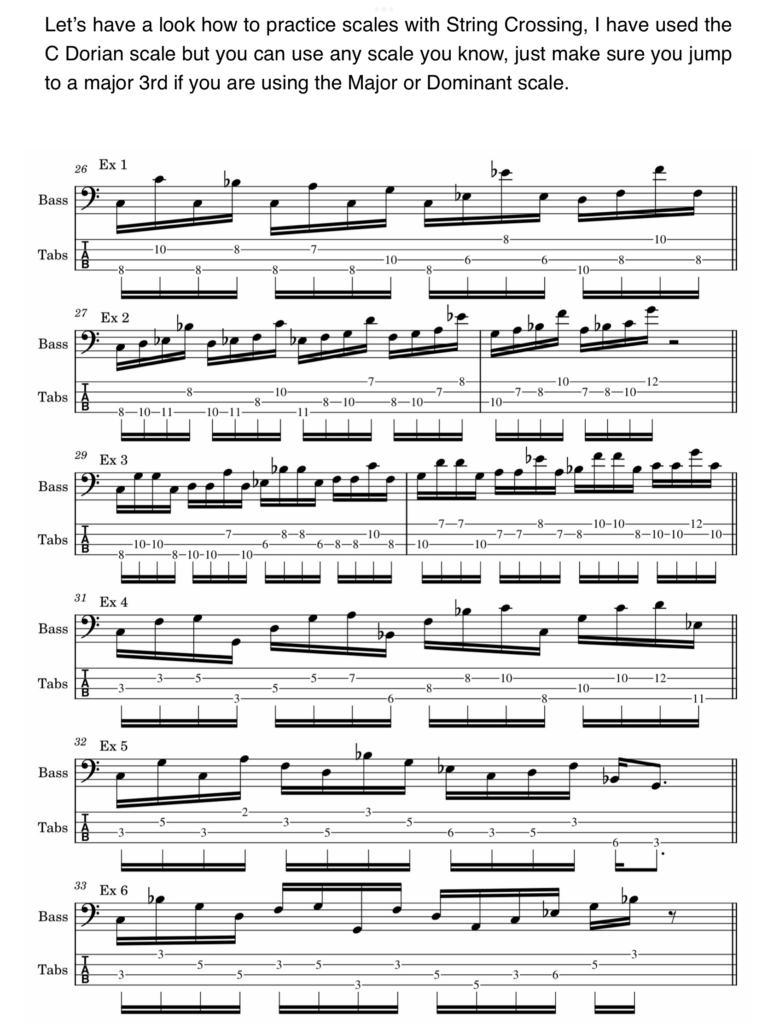String crossing is a fundamental technique for bass players, involving the transition to non-adjacent strings while maintaining fluidity and control. This technique improves the versatility and expressiveness of your playing.
Importance of String Crossing
Key Benefits:
- Enhanced Musicality: Enables smooth transitions between low and high notes, creating a seamless flow in your bass lines.
- Improved Control: Mastering string crossing allows for greater precision and the ability to combine various combinations effortlessly.
- Versatility: Essential for executing complex patterns, improving your overall playing style.
Key Intervals for Practice
Octaves and Sevenths:
- Commonly used intervals in bass lines.
- Practice playing these intervals to achieve fluid transitions.
Fifths and Sixths:
- Less common but equally important for developing versatility.
- Ensure comfort with these intervals for a comprehensive skill set.
Practicing String Crossing
Using Backing Tracks:
- Groove Application: Play along with backing tracks to apply string crossing techniques within grooves, adding variations and fills.
- Isolated Practice: If a particular movement is challenging, isolate and practice it independently until mastered.
Incorporating Scales:
- Pattern Exploration: Use string crossing to explore different patterns within scales.
- Creative Exercises: Develop your own exercises and variations to deepen your understanding and control.
Practice Tips
- Start Slow: Begin at a slow tempo, focusing on precise movements and sound quality.
- Gradual Increase: As you become more comfortable, gradually increase the tempo.
- Building Stamina: Consistent practice will improve your picking hand strength and endurance over time.
Example Exercises
- Exercise 1: Practice string crossing using the Cm7 pentatonic scale, applying minimal harmonic content.
- Exercise 2: Use octaves and sevenths in a groove with a backing track.
- Exercise 3: Isolate and practice fifths and sixths at a slow tempo, gradually increasing speed.
Practical Application
- Phrase Practice:
- Break down phrases into smaller segments and practice each part separately.
- Use loops and backing tracks to practice integrating phrases into your playing.
- Combining Phrases:
- Once comfortable, combine smaller segments to form complete phrases.
- Practice these phrases within a groove to improve your musicality.
- Improvisation:
- Use string crossings to add variety to your improvisation.
- Experiment with different combinations to find what works best for your style.
- Live Performance:
- Apply these techniques in live settings to add flavour to your playing.
- Use string crossings to create engaging bass lines.
Mastering string crossings is crucial for any bass player aiming to achieve technical proficiency and musical versatility. By practicing the exercises and techniques, you will develop greater control over your instrument, allowing you to create fluid and engaging bass lines. Consistent practice and experimentation will lead to significant improvements, making you a more skilled and versatile musician. Embrace the challenge and enjoy the journey.





